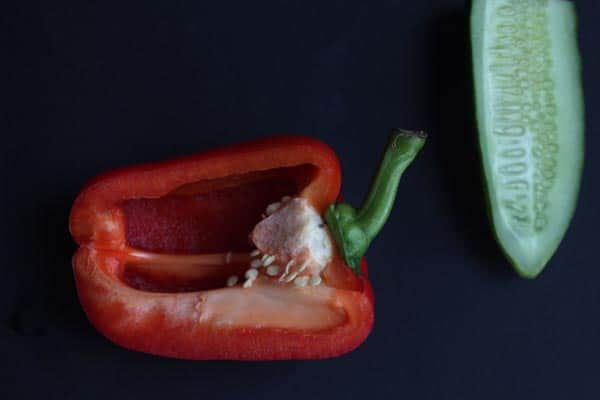As a pet parent, you want to make sure that you are feeding your pup the healthiest and safest foods. Red capsicum is a vibrant and nutritious vegetable, but can dogs eat it? Red capsicum, also called bell peppers, are a great source of vitamins and minerals, and can be a beneficial addition to your pup’s diet. However, there are some things to consider before giving red capsicum to your pup. In this blog post, we’ll explore the potential health benefits of red capsicum for dogs, as well as any potential side effects. We’ll also provide guidelines for feeding red capsicum to your pup, so that you can make an informed decision. So, can dogs eat red capsicum? Read on to find out!
Red, Green, Yellow, Orange: Does Color Matter?
Bell peppers of all hues contain vital vitamins and nutrients that are good for a dog’s health, though the red variety is the most nutrient-dense. According to Bella Frakes, a dog trainer and breeder at Mikotusar Kennels and Aviary in Dallas, Texas, “Red bell peppers are the best to feed to your dog because they contain the highest amounts of vitamins and antioxidants.”
Can Dogs Eat Bell Peppers?
Dogs can consume bell peppers, and they may even experience some health benefits from the occasional snack. There are some precautions that must be taken before adding bell peppers to your dog’s diet in order for it to be healthy. In this article, we’ll talk about the advantages of giving bell peppers to dogs as well as any risks associated with doing so.
It is important to provide water when cooking or giving your pup raw vegetables like bell peppers for safety reasons as well as nutrient absorption purposes, as dogs can consume both raw and cooked bell peppers without experiencing any adverse effects. If they don’t get enough water, they might develop stomach problems like diarrhea or vomiting, which, if untreated, can cause dehydration. Dogs who eat vegetables run the risk of rapidly dehydrating because their bodies don’t absorb water as well as ours do. For other fruits and vegetables like strawberries, bananas, cauliflower, cabbage, or mushrooms, this is also significant.

Try Wild Earth Dog Food 30% Off Today!
What Type of Bell Peppers Can a Dog Have?
The dog may consume the bell pepper if it isn’t particularly spicy. This indicates that any spicy peppers or chillies are NOT included in the “ok to eat” category.

Be sure to thoroughly wash or peel the bell peppers to get rid of any dirt or pesticides. This applies to organically grown bell peppers even if you are reasonably certain that no pesticides or chemicals were used.
REMOVE the seeds and stems BEFORE giving your dog bell peppers.
FAQ
Is red capsicum good for dogs?
Bell peppers of all hues contain vital vitamins and nutrients that are good for a dog’s health, though the red variety is the most nutrient-dense.
Can dogs eat raw capsicum?
All bell peppers—red, green, orange, and yellow—are safe for dogs to consume, though red bell peppers are the most advantageous for their health. While dog owners can occasionally treat their pets with sweet peppers, dogs should not be given spicy peppers like chili peppers or jalapenos.
What happens if a dog eats red pepper?
Although it is not a toxic substance, it can cause your pet great pain and discomfort. If your dog does eat a spicy pepper, don’t panic. Although they are not specifically toxic to dogs, they could cause stomach discomfort, bowel pain, diarrhea, and vomiting in your dog.